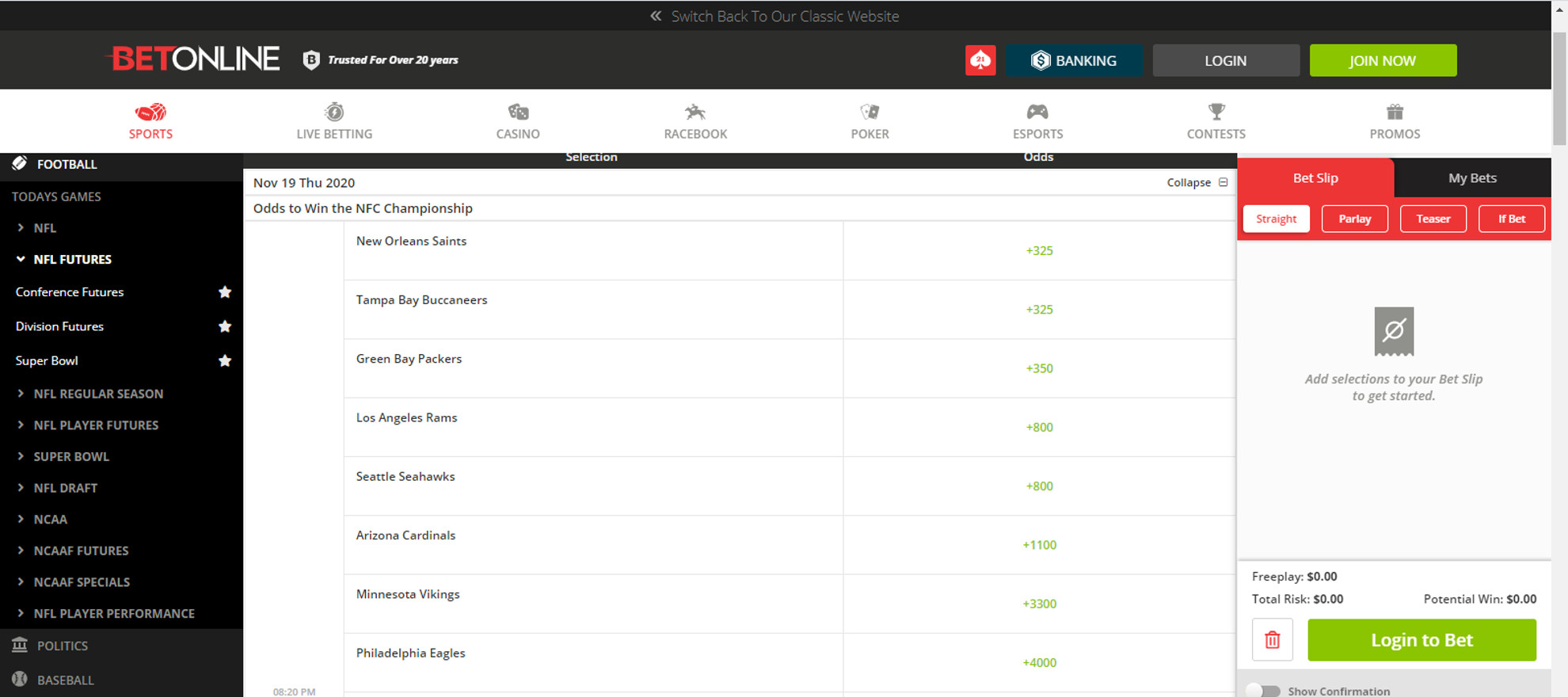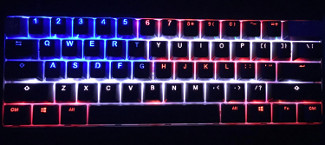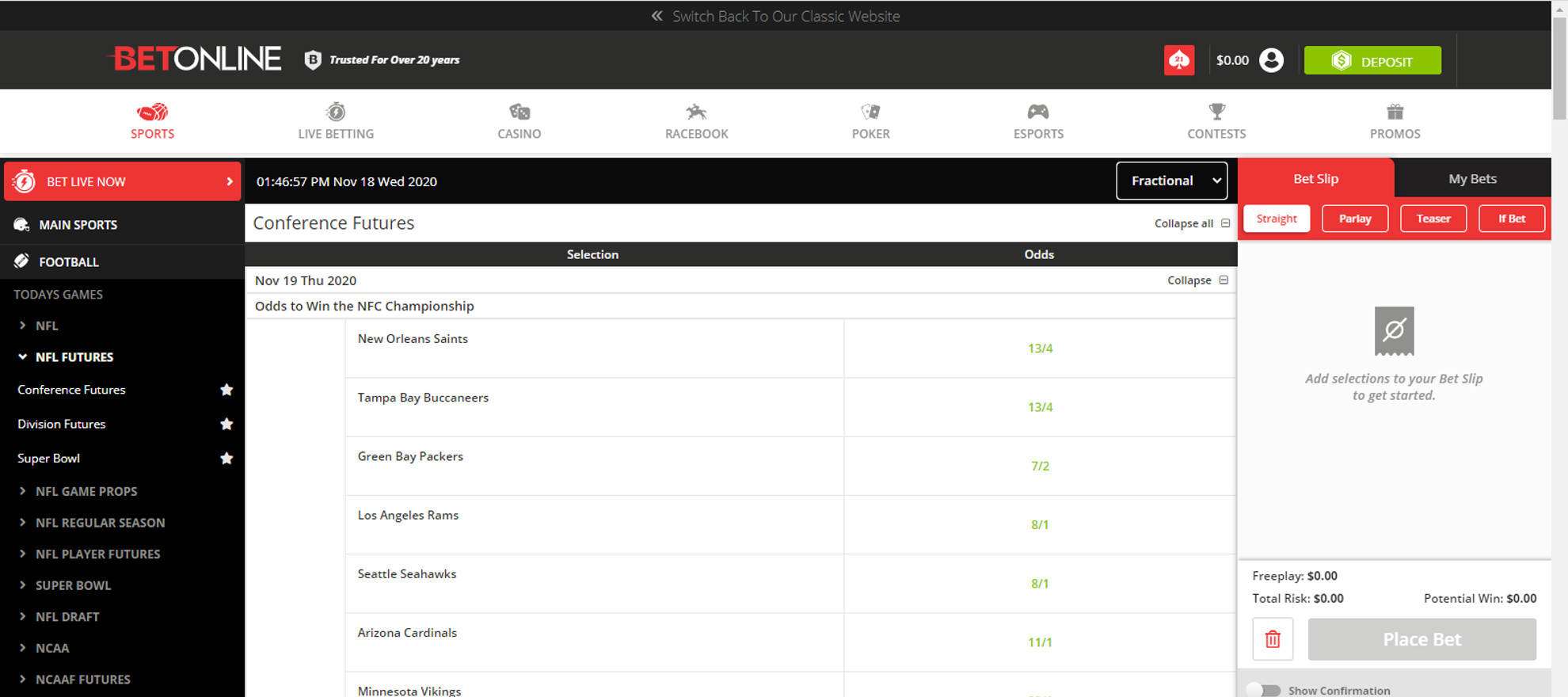How To Read Sports Betting Odds

On this particular image, these are “American Odds” listed. See below to see the same odds in “Fractional Odds”.
You have placed a few wagers on sports over the years, and lately you have been taking a stronger interest in sports betting. You’ve gone through our reviews of recommended sportsbooks and have found a couple of sites to join. After signing up, you made your deposits and are now ready to wager. There is only one problem. You do not understand odds.
You have only a flimsy grasp on decimal odds at best. But now you have discovered Hong Kong odds. They seem almost identical to decimal odds—but clearly they are not. What exactly is the difference? And US odds? You cannot even begin to figure those out.
This is a common situation. If you find yourself totally mystified by odds formats, you are far from alone. Odds are so infamously complicated that many people actually hold back from learning how to wager on sports because of them. The math intimidates some people.
So, what now?
Talk to veteran sports bettors and you will find that over time this situation may not always improve much. A lot of punters find a format they feel comfortable with and stick with it. Confronted with a different odds format they are not used to, they don’t have a clue what to do with it.
Fortunately for you, many sportsbooks nowadays allow you to select the odds format you prefer and display all the odds in it. Being able to do this makes it a lot easier to wager, because you don’t need a strong grasp of all the odds formats in order to bet. If you’re really good at reading one particular format, you can stick with that most of the time.
However, there may be occasions when you may have to read a different format. For example, say you usually prefer US odds, but you are getting into matched betting. Because they are easiest to compare, decimal odds are used. So you would have to learn decimal odds and display decimal odds to do it.
Imagine you will be betting on a sport offline, say at a racecourse. The racecourse only uses fractional odds, so you have to use them too in order to bet on the horse race.
There may also be situations where you choose to wager on a website which simply does not offer the odds format you usually prefer.
This is why it is a good idea to at least get familiar with the most common odds formats you are going to encounter. In this article, I will teach you how to read these odds formats:
- US odds
- Fractional odds
- Decimal odds
- Hong Kong odds
Let’s break it down!
US Betting Odds

Most of our readers are going to end up coming across American Odds.
Also called “American Odds” or “Moneyline Odds,” US odds are of course mainly used in the USA. But like other exports from America, US odds have to some degree gone international.
Like most things “American”, you will be able to find these all over the world being used by various sportsbooks, but this isn’t the default by any means.
Live NFL Odds – in US odds format
If you are from the US, you probably actually have used US odds before while betting. If you wagered casually at some point on a game in the past, you might have heard someone say something like, “I will give you +140 odds on ____.” If you have joined a betting site which is US-based, chances are good that the odds are displayed in US format by default.
While many people in the US have grown up with US odds and understand them as a result, most people abroad are not big fans of this format. US odds are not particularly straightforward. It takes some thought to interpret them.
U.S. odds are always interpreted around the concept of betting or winning $100, whether you are wagering $100 or not. They may be expressed as a number which is positive or negative, but which is always greater than 100.
If the number you see is positive, that is how much money you will win if you were betting exactly $100.
If the number you see is negative, that is how much money you would have to bet if you wanted to win $100.
It is easiest to understand U.S. odds through a couple of examples.
Even Money Bet Expressed in US Odds
When talking about odds formats, it always helps to know what an even money bet looks like. This helps you understand how to convert between different formats as you continue to learn.
Expressed in U.S. odds, an even money bet looks like: +100.
As this is a positive number, you can interpret it like this:
“If I wager exactly $100, then I will win exactly $100.”
Naturally if you will be wagering more or less than $100, you simply have to do the math to figure out what your winnings would be.
So imagine that you are actually going to be wagering $200. That would mean you would win exactly $200. If you are going to wager $150, you would win $150, and so on.
Another Example in US Odds
Now imagine that you see odds of +150.
Interpret these odds, which are again expressed as a positive number, as follows:
“If I wager exactly $100, I will win exactly $150.”
Now picture odds of -150.
As these odds are expressed as a negative number, the interpretation is:
“I would need to wager exactly $150 if I wanted to win $100.”
You can see how US odds which are expressed as a positive number offer you a much better value than those which are expressed as a negative number. You will see these low-value odds in situations where one team is heavily favored to win a game. Because the sportsbook will likely lose by taking the opposite end of that bet, they do not want to make a wager on the favorite attractive to you. You will of course find the highest value odds on underdogs.
Fractional odds – UK Betting Odds

Take a look at this image as well as the one at the very top of the page. These are the same images, but with “Fractional Odds” on this one.
If you are from the UK, then you probably know your way around fractional odds (or possibly decimal odds) better than other formats. If you are from the US, though, chances are good you find fractional odds as confusing as those overseas find US odds.
Fractional odds are confusingly named. This is important to remember. They do not represent the likelihood of winning (a mistake which newbies often make about odds altogether, but fractional odds in particular). Rather they represent the amount you can win versus the amount you are wagering.
Fractional odds usually are written with a slash, but may also show up with a colon or with the word “on” or “to.” 2:1 odds is the same thing as 2/1 odds.
Let’s take a look at a few examples to understand how fractional odds work.
Even Money Bet Expressed in Fractional Odds
Expressed in fractional odds, an even money bet looks like 1/1.
The first number is always the amount you can potentially win, and the second number is always the amount that you are wagering.
So you can interpret even odds like this:
I can win $1 / on a wager of $1.
More Examples in Fractional Odds
Say you see odds of 6/1. Interpret these odds like this:
I can win $6 / on a wager of $1.
This is a good value. You only need to risk a small amount for the chance to win a large amount. As you can see, the fractional odds tell you nothing about the odds of actually winning your bet—they simply express the fraction of your stake you have a chance to win. In this case you can win 600%, so we express that as 6/1.
Now let’s imagine that you see odds of 1/6. These odds are interpreted as:
I can win $1 / on a wager of $6.
See how this is not a good value? You have to risk a lot to win a little. You only have a chance to win one-sixth of your overall stake (thus the expression 1/6). There is not much point in that. As you probably already have figured out, you see these kinds of odds when betting on a favorite.
If you didn’t grow up with them, fractional odds take getting used to. You will find they are sometimes the default option on UK betting sites. You will also encounter them at UK racecourses.
Decimal odds
A lot of UK and US bettors never really go out of their way to learn decimal odds, but in my opinion, that is a mistake. Decimal odds are delightfully simple compared to other odds formats, which is probably why they are the default throughout many countries around the world. Australians, Canadians, and New Zealanders use them. You will also find them in use all over Europe.
Decimal odds are awesome because you do not have to do a lot of interpretive thinking to make sense of them. They are also very easy to compare to one another, thus why they are favored in matched betting.
Decimal odds are expressed as a number like “X .YZ.” The number acts as a multiplier. With it, you can calculate how much you stand to win on a bet.
Interpret decimal odds as follows:
“If I multiply my stake by X.YZ, I will find out my total potential return on my wager.”
There is a very specific reason I wrote return as opposed to winnings. Decimal odds tell you how much money will be returned to you in total.
Your return = your winnings + your original stake.
If you do not realize that your original stake is included in the return, you will miscalculate and assume that you are winning significantly more money than you actually are.
Even Money Bet Expressed in Decimal Odds
Expressed in decimal odds, even odds look like 2.00
The reason that even odds are 2.00 and not 1.00 comes back to what I just explained about your original stake being included with your return.
Here is an example which represents even odds in decimal format:
$1 x 2.00 = $2
In this example, you wager $1. You multiply that by the 2.00 odds, and you get a total return of $2.
This return breaks down into $1 in profit and your original stake of $1 given back. So your total winnings here are equal to the amount that you bet.
Other Examples of Decimal Odds
Imagine you have $50 to stake, and you see odds of 3.40.
In this situation, you would multiple:
$50 x 3.40 = $170
Remember, $50 out of that $170 is your original stake, so your total actual winnings are $170 – $50 = $120.
There is no such thing as negative decimal odds, or decimal odds under 1.00. The lowest decimal odds you will ever see are 1.01. At odds this low, your winnings are fractional and minuscule. As you probably have already ascertained, super low odds like these show up in the presence of an overwhelming favorite.
Since there is some math involved, you may be wondering why I think that decimal odds are easier to understand than fractional odds.
Which is bigger, 8/9 or 13/16?
You probably would have to run the numbers to compare the decimal results to know the answer to that question.
Which is bigger, 3.40 or 3.55?
You can answer that question instantaneously without any need for extra math. Now you can see why decimal odds are popular for matched betting—and for shopping for the best odds in general. Shopping for the best odds in fractional format can be a challenge!
Hong Kong Odds
I like Hong Kong odds a lot, and I think you will too once you learn how to use them. Unfortunately they are really only popular in Asia. Still, some sports betting sites allow you to choose them as your default display format.
You know how it can be slightly confusing to realize that decimal odds are a multiplier which generates a return that includes your stake? If you can imagine a multiplier which told you only your potential winnings, you would have Hong Kong Odds.
It is easiest to explain this by looking at even odds expressed as Hong Kong Odds and comparing that to even odds expressed as decimal odds.
Even Odds Expressed as Hong Kong Odds
As you learned previously, even odds expressed in the decimal format are 2.00.
Expressed in Hong Kong odds, even odds look like 1.00
This sheds some light on the equation for calculating your potential winnings using Hong Kong odds, which is:
“If I multiply my stake by X.YZ, I will find out my total potential winnings on my wager.”
So with our even odds of 1.00, one example might be:
$1 x 1.00 = $1.
Since your stake is not included here, you see only the amount you are actually going to win. You bet $1 and you win $1. You also get your $1 stake back, so you wrap up with $2 in your account total. This really could not be simpler, and displaying odds in this format may be more intuitive for a lot of bettors than decimal odds. It certainly is for me; it is one less bit of subtraction to do.
More Examples of Hong Kong Odds
Imagine that you have $5 to bet, and you see Hong Kong odds of 1.80.
$5 x 1.80 = $9.00
With this particular wager, you have the chance to win a total of $9. Remember, you will still get your original stake back, so you will have $14 ($9 + $5) in your account after the bet is complete.
Now, if we were looking at decimal odds of 1.80, the equation would be the same, but it would not mean the same thing.
$5 x 1.80 = $9.00.
But with decimal odds, your original stake is included in the end result, so you would have to subtract $5 from $9 to find out the portion which accounts for your actual winnings. Do that and you will discover it is just $4.
While Hong Kong odds and decimal odds are both easy to use, it is essential not to confuse the two. Imagine if you assumed that you were looking at Hong Kong odds while you were actually looking at decimal odds—or you simply forgot that decimal odds are computed in a different way. You would think you were getting a much better value than you actually are!
Conclusion: Use Whatever You Understand Best, But Familiarize Yourself With All Common Odds Formats
These are the four most common odds formats, but there are others out there, like Indonesian odds or Malay odds. Thankfully you will not encounter them very often, so you should be good to go if you just stick with learning these four formats.
I recommend you set up your betting sites to display the format you find most intuitive to grasp. This will reduce mistakes in your calculations and make it easy for you to spot a good value. But do not just forget everything you have learned about the other formats I have shared with you. There will be times when you will need to know how to use all the common odds formats. Otherwise you risk missing some great betting opportunities.
Learning how to use odds is not easy for everyone. Just bear in mind that none of these formats are as convoluted as they may initially appear. Once you work through enough examples of each, you should discover that comparing odds and calculating potential profits becomes second nature.
More Great Reads


